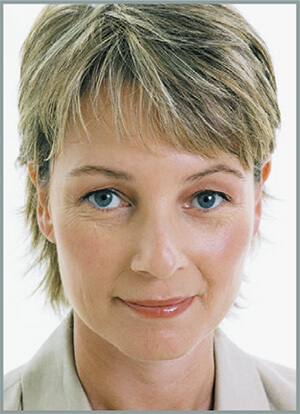How Is Rosacea Treated?
 Because rosacea features may differ from one patient to another, treatment must be tailored by a physician for each individual case.
Because rosacea features may differ from one patient to another, treatment must be tailored by a physician for each individual case.
A range of oral and topical medications may be used to treat the various signs and symptoms associated with the disorder. Physicians may prescribe medical therapy specifically to control the redness. Bumps and pimples often receive initial treatment with oral and topical therapy to bring the condition under immediate control, followed by long-term use of an anti-inflammatory therapy alone to maintain remission. Therapies specific for rosacea are now available in various formulations that can be selected for each patient.
When appropriate, lasers, intense pulsed light sources or other medical and surgical devices may be used to remove visible blood vessels or correct disfigurement of the nose. Ocular rosacea may be treated with anti-inflammatory medications and other therapy, and recommendations from an eye doctor may be needed.
Skin Care
Patients should check with their physicians to ensure their skin-care routine is compatible with their rosacea, as gentle care may help soothe the skin. Patients are advised to clean their faces with a mild and non-abrasive cleanser, then rinse with lukewarm water and blot the face dry with a soft, thick cotton towel. Never pull or tug your skin or use a rough washcloth.
Patients may apply non-irritating skin-care products as needed, and are advised to protect the skin from sun exposure using a sunscreen that delivers UVA/UVB protection with an SPF of 30 or higher. Mild or pediatric formulations are available for sensitive skin, and look for non-chemical (mineral) sunscreens that contain zinc or titanium dioxide. Rosacea patients should avoid any skin-care products that sting, burn or cause additional redness.
Cosmetics may be used to conceal the effects of rosacea. Green makeup or green-tinted foundations can be used to counter the appearance of redness. This can be followed by a skin-tone foundation with natural yellow tones, avoiding those with pink or orange hues.
Lifestyle Management
In addition to long-term medical therapy, rosacea patients can improve their chances of maintaining remission by identifying and avoiding lifestyle and environmental factors — often related to flushing — that may trigger flare-ups or aggravate their individual conditions. Identifying these factors is an individual process, however, because what causes a flare-up in one person may have no effect on another.
To help identify personal trigger factors, rosacea patients are advised to keep a diary of daily activities or events and relate them to any flare-ups they may experience. NRS members may obtain a Rosacea Diary booklet and other materials at no charge by writing the Society or calling its toll-free number at 1-888-NO-BLUSH. Information is also available on the Society's website at www.rosacea.org, or via email at info@rosacea.org.
| Previous | Index | Next |
Download a free PDF of this booklet.